王树洲
1951年出生。1972年从事摄影至今;1985年加入中国摄影家协会;1987年毕业于沈阳鲁迅美术学院艺术摄影系;现任河南省艺术摄影学会副会长;辉县市文化馆研究馆员。
获奖
1998年 作品《柿乡》 亚洲文化中心奖
2003年 作品《苏醒》 中国文化部群星奖
2005年 河南省首届摄影创作 金路奖
2006年 《中国摄影》反转片大赛“摄影十杰”提名
2009年 河南省第二届摄影创作“金像奖”
2012年 《20世纪70年代中国农村影像报告》 平遥国际摄影大展 “凤凰
卫视 优秀摄影画册奖”
2013年 《20世纪70年代中国农村影像报告》云南大理国际影会“最佳出
版物” 大奖
展览
2013年 《20世纪70年代中国农村影像》 北京798 “映”艺术中心
2011年 作品《荒滩造田中的太行山人》 “百姓·百年—首届中国国际
摄影双年展”
2011年 《70年代群像》 美国洛杉矶摄影节
2009年 《70年代群像》 平遥国际摄影大展
2008年 《太行山人的石头情节》 沈阳世界摄影报导大展
2007年 《70年代民兵》 平遥国际摄影大展
出版
2014年 《褪去的色彩》中国摄影出版社
2012年 《太行风骨》中国摄影出版社
2012年 《20世纪70年代中国农村影像报告》中国摄影出版社
2003年 《收尽奇峰》(合著) 河南美术出版社
1997年 《太行石韵》 河南美术出版社
收藏
2008年 《人民心中的毛主席》 北京华辰拍卖
2008年 《荒滩造田中的太行人》、《民兵》 北京华辰拍卖
2005年 《太行山作品》 河南博物馆
Shuzhou Wang
Born in 1951. has been engaged in photography since 1972. joined the China Photographer’s Association in 1985. graduated in department of photography, Luxun Academy of Fine Arts, Shenyang. He is now a vice president of Art Photography Society of Henan Province. a researcher in Hui County Cultural Museum.
Award
1998 “Persimmon Village”. Asian Cultural Center Award
2003 “Revive” Chinese Cultural Ministry Stars Award
2005 First Creative Photography Festival in Henan, “Golden-Road”Award
2006 “Best 10” nomination. “China Photography” reversal film competitioin
2009 “Golden Figure Award” Second Creative Photography Festival in Henan.
2012 “Report of Chinese rural image of 20th century 70’s” Pingyao International Photography Exhibition. “Outstanding Photographic Album Award” by Phoenix TV Station. 2013 “Report of Chinese rural image of 20th century 70’s” Best Publication Award by Yunnan Dali International Film Club.
Exhibition
2013 “Report of Chinese rural image of 20th century 70’s” Ying Art Centre in 798 Beijing.
2011 “Taihang People in Wasteland” “Family&Century”—first Chinese International Photography Biennale.
2011 “70’s Portraits” Los Angeles Photography Festival
2009 “70’s Portraits” Pingyao International Photography Exhibition
2008 “Stone Valentine in Tai Hang” Shenyang World Photographic Exhibition
2007 “Militia in 70’s” Pingyao International Photography Exhibition
Publication
2014 “Faded Color” published by China Photography Press
2012 “Strength of Tai Hang ” published by China Photography Press
2012 “Report of Chinese rural image of 20th century 70’s” published by China Photography Press
2003 “Distinctive Peaks” (co-authored) by Henan Art Press
1997 “Charm of stone in Tai Hang” published by Henan Art Press
Collection
2008 “Chairman Mao in Hearts” auctioned in Hua Chen Beijing.
2008 “Taihang People in Wasteland” “Militia” auctioned in Hua Chen Beijing.
2005 “Works of Tai hang Mountain” collected by Henan Museum
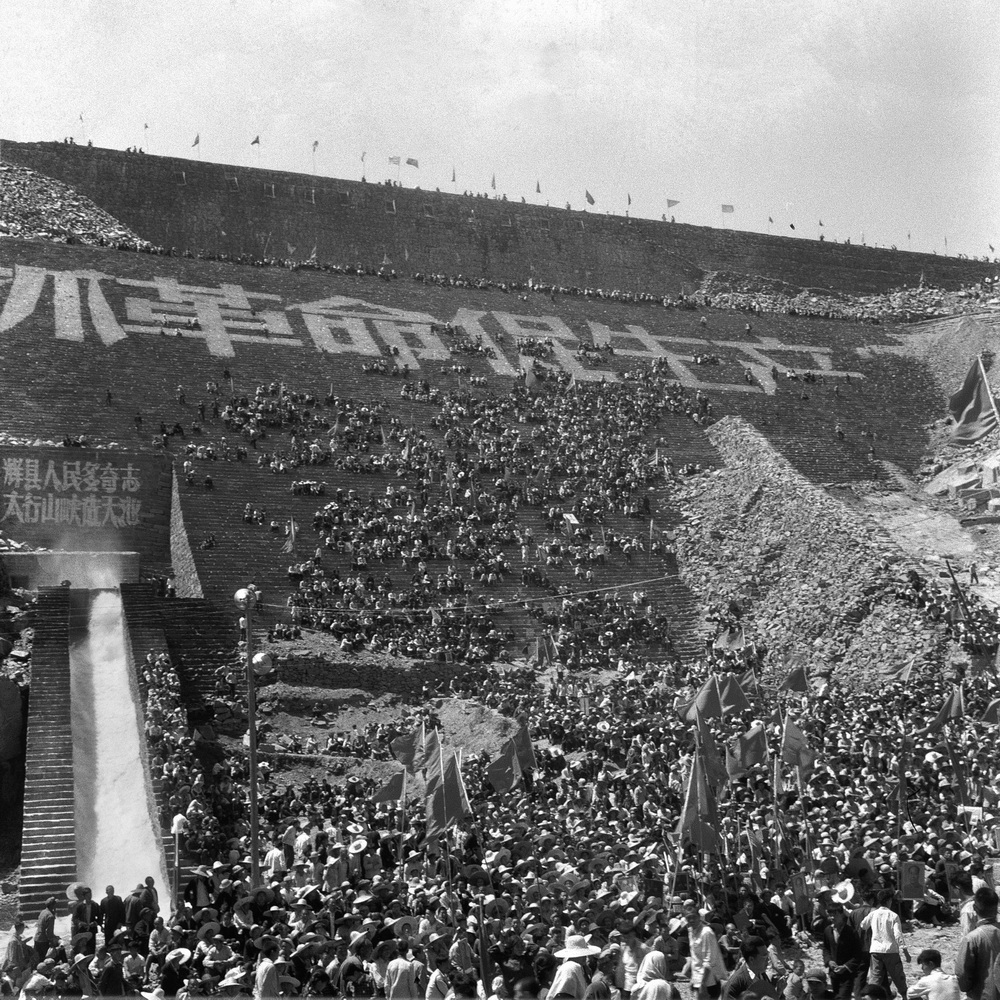
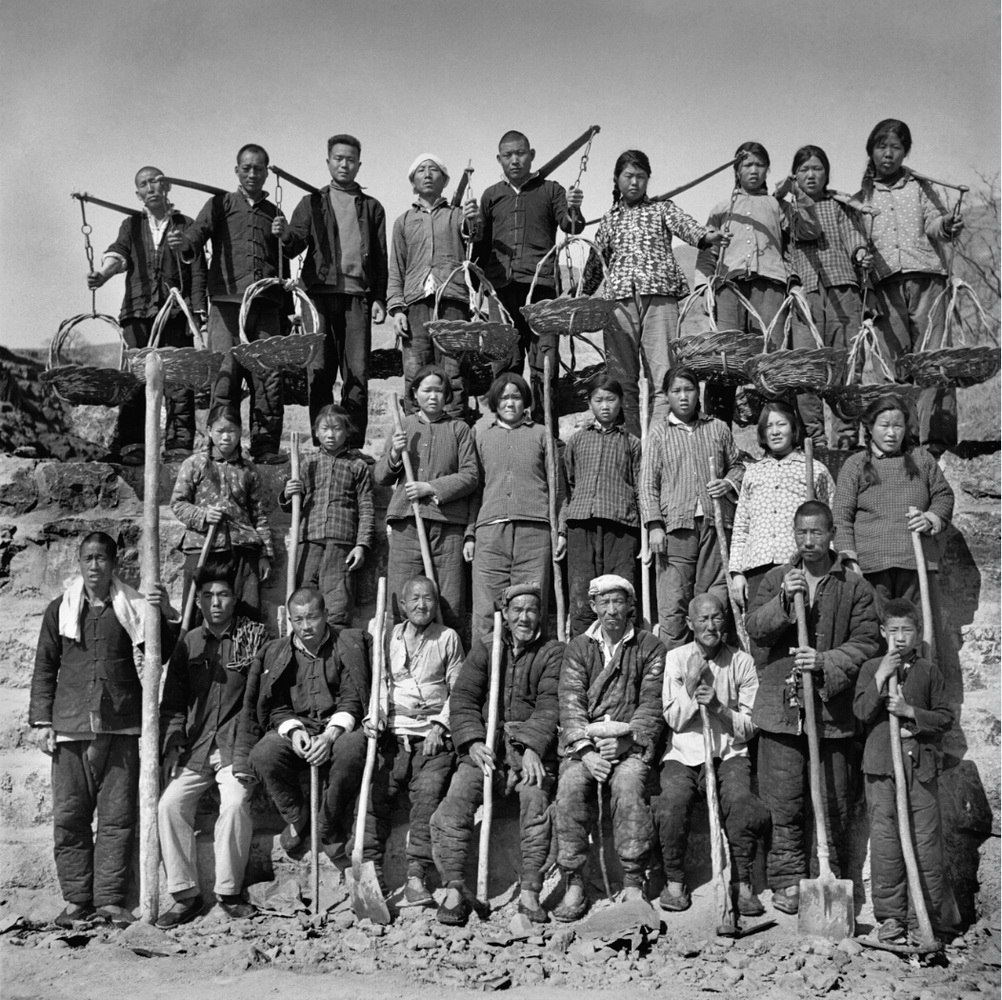
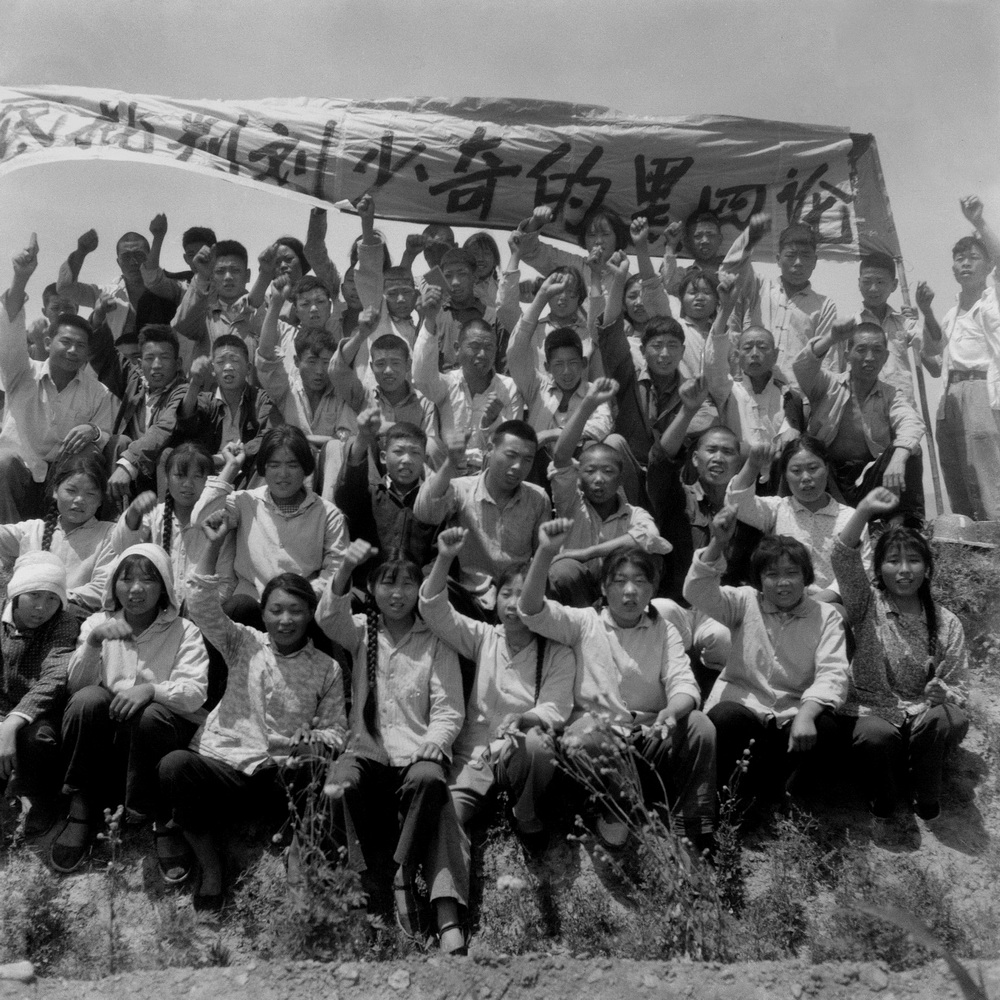
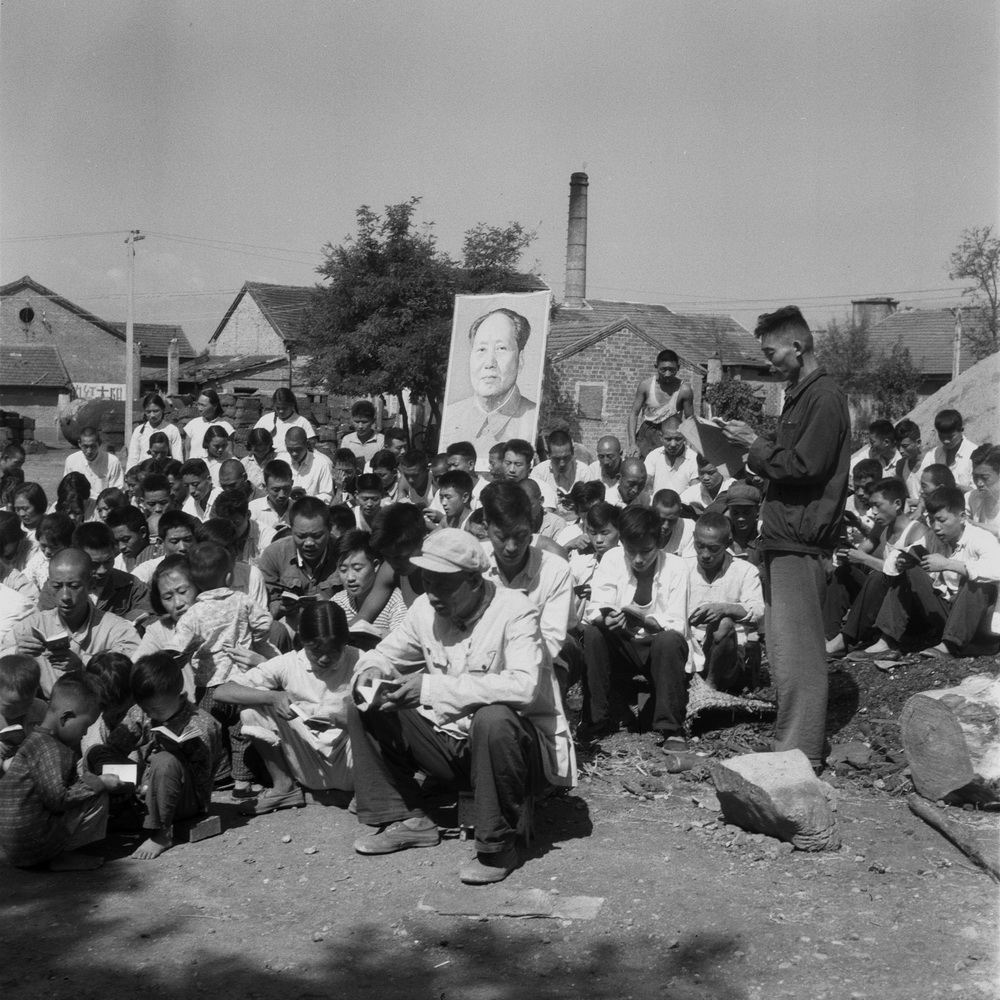
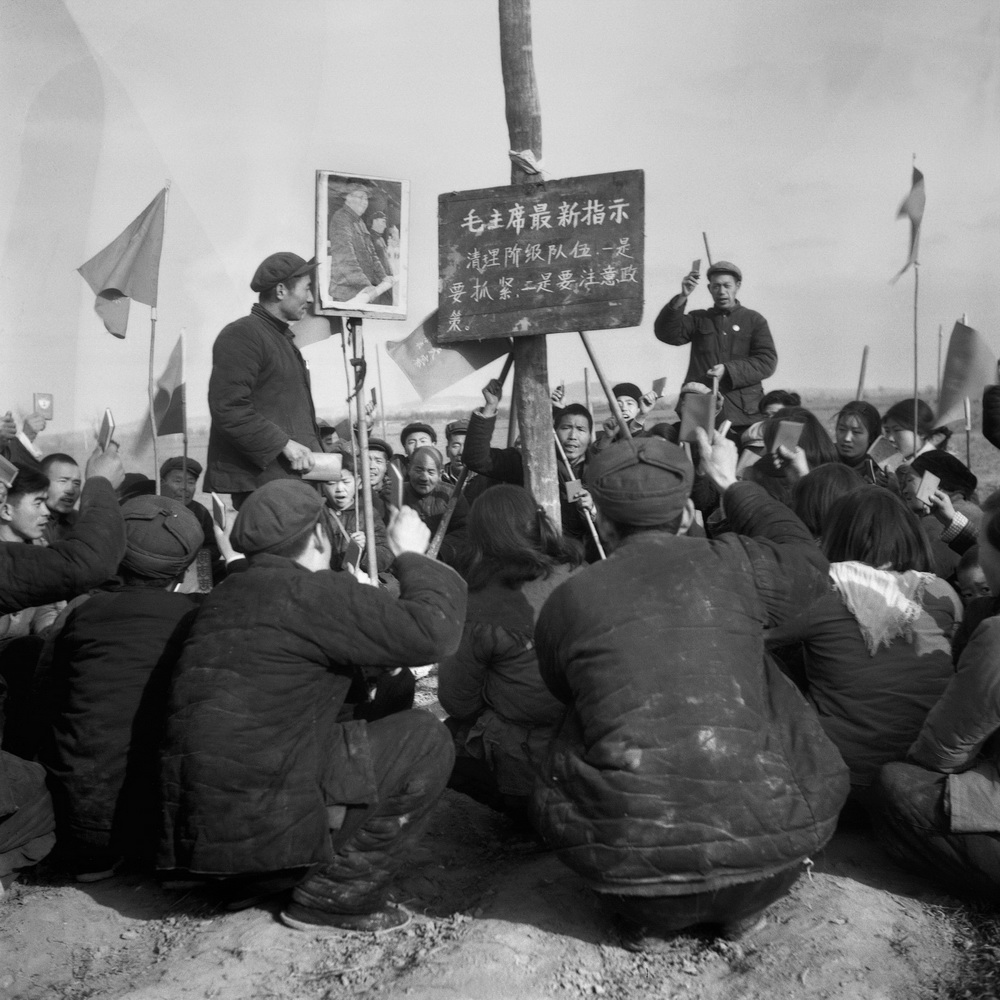
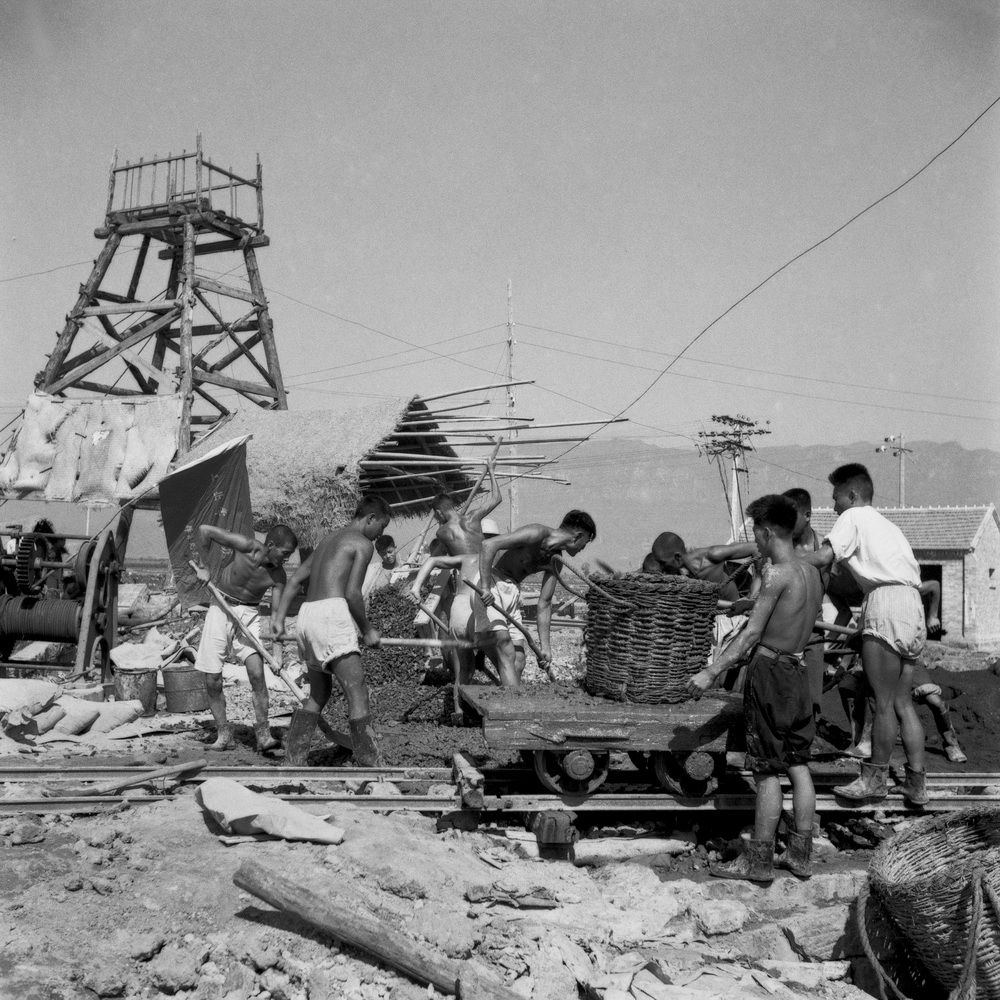
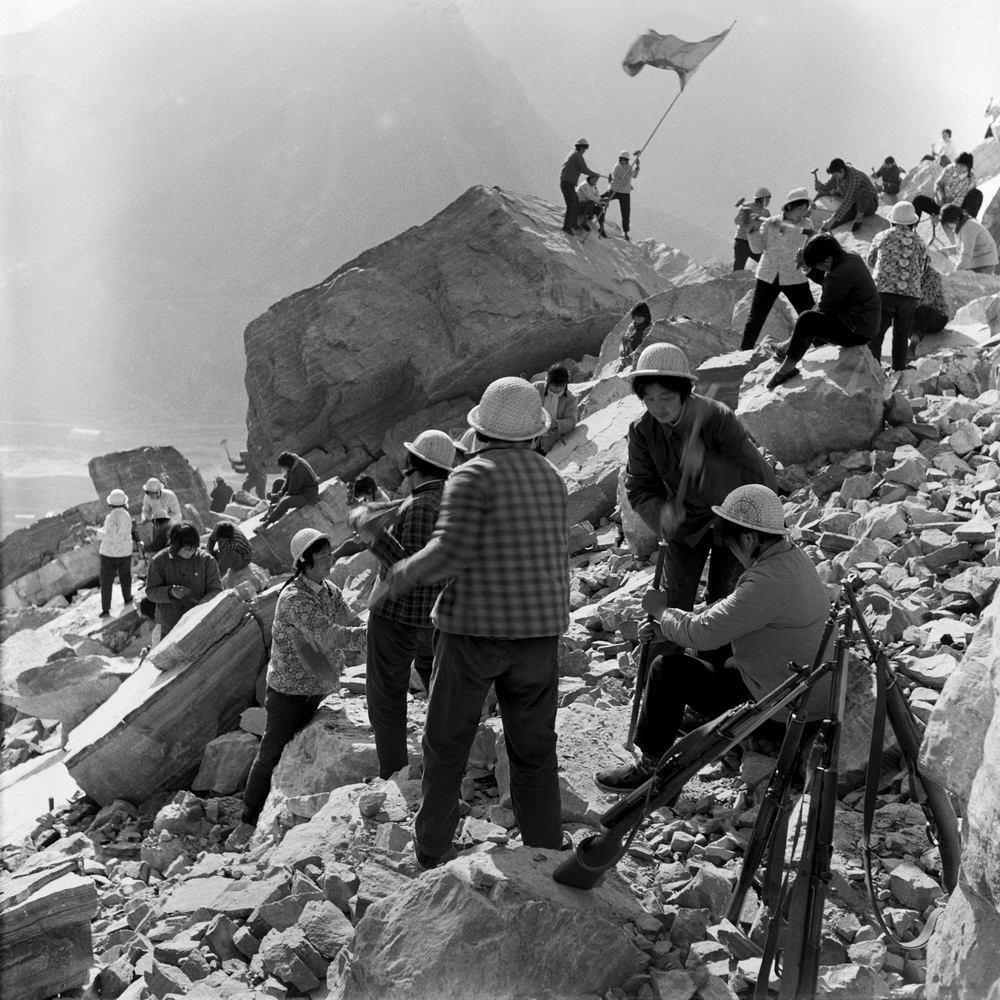

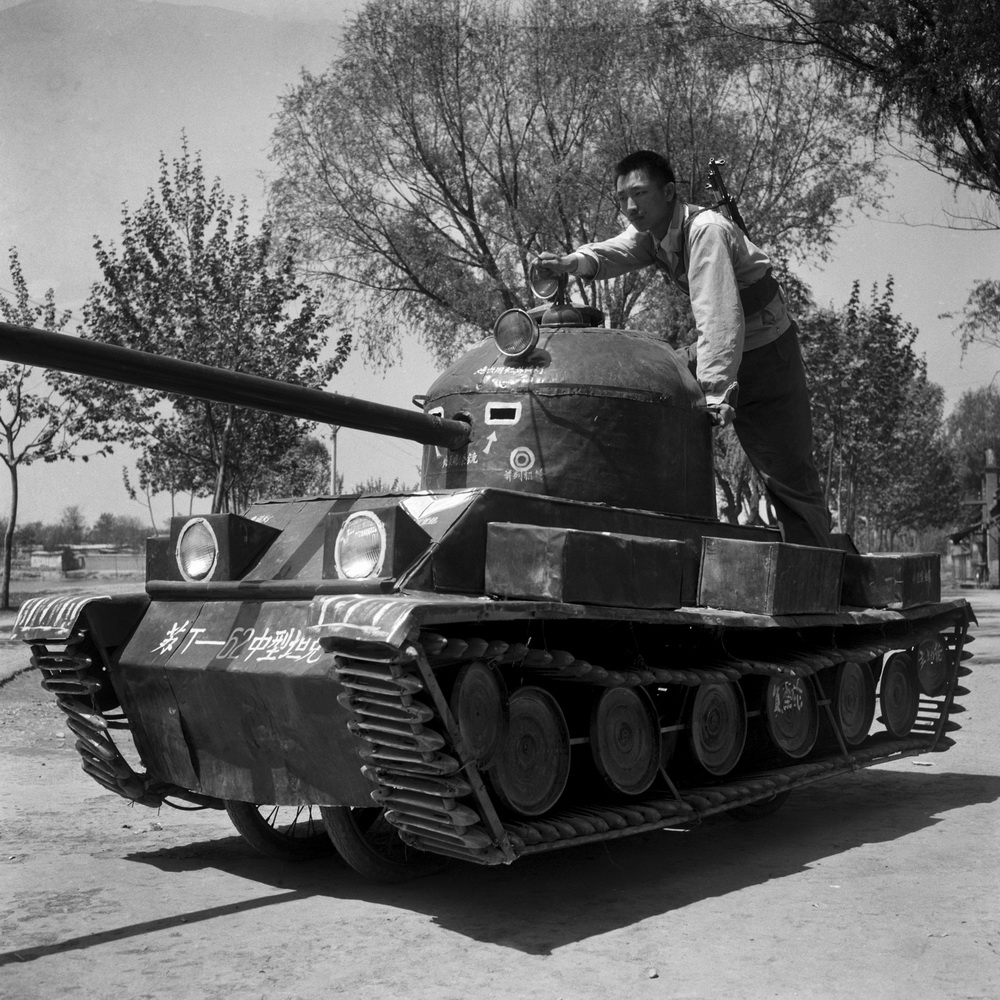
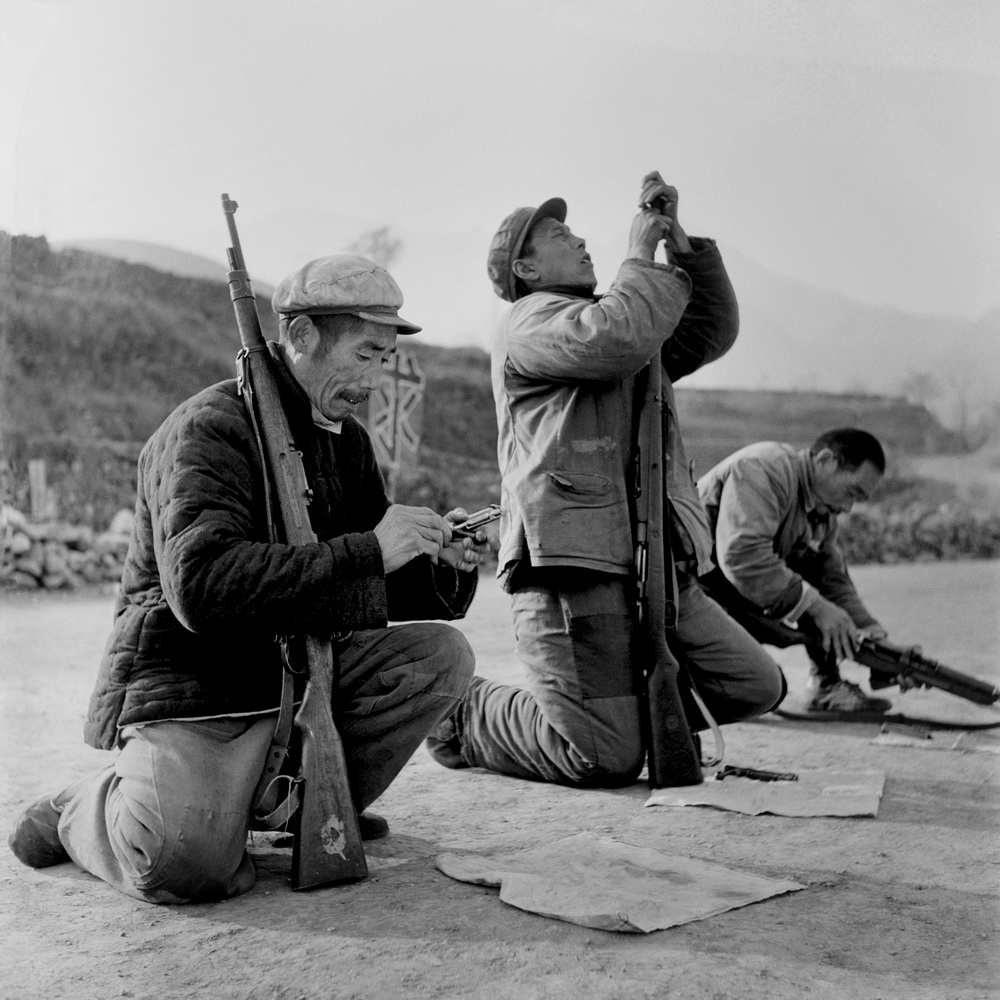
一个年代的身影
我们回望某个历史时期,首先感受到的是那个年代的社会气氛,最先进入视野的是发生在那个年代的重大事件,这两个方面概括了一个时代的基本面貌。中国的20世纪70年代无疑是新中国历史上一个十分重要的、具有里程碑意义的年代,没有哪一个年代如此地充满危机和动荡,如此惊心动魄。
1970年伊始,《人民日报》、《解放军报》、《红旗》杂志(时称“两报一刊”)发表元旦社论《迎接伟大的70年代》。“斗、批、改”、“清理阶级队伍”的持续和深化,“一打三反”运动的开始,拉开了这个十年的序幕。1971年载入1969年中共新党章的毛泽东的“亲密战友”和“接班人”林彪叛逃,在蒙古机毁人亡,全国震惊,大规模的“批林整风”随即在全国展开。1975年初邓小平复出,着手整顿已经混乱不堪的社会秩序和千孔百疮的国民经济,年底再次下台,“批邓反击右倾翻案风”铺天盖地。1976年周恩来、朱德、毛泽东相继去世,华国锋出任中共中央主席和国务院总理,王洪文、张春桥、江青、姚文元被逮捕,揭批“四人帮”运动汹涌澎拜。70年代承接了60年代中期开始的“文化大革命”的混乱,又制造出更多的灾难,严酷的政治斗争和权力之争,演绎出从林彪出逃到“四人帮”覆灭的一系列的重大事件和相关运动,人民群众在政治风浪中随波逐流,在不断变换的口号中茫然无措,自发的“四五运动”遭到残酷的镇压,国民经济已经到了崩溃的边缘,“75·8”河南洪水、76年唐山地震造成30多万人丧生的巨大灾难,更使这个充满紧张、凶险、动荡、晦暗、危机四伏的年代显得更加沉重。
1978年在针对“四人帮”的“揭、批、查”运动如火如荼之际,一场由媒体到中共、政府、民众的关于真理标准的讨论震动社会。从新中国成立以来到“文化大革命”发展到极致的一浪高一浪的大规模的政治运动终于止于十年,工作重点的转移和平反冤假错案的开始使这个沉重的年代又成为中国社会一场“改革开放”大变革的发端。
我们说70年代是一个十分重要的年代并不止于此。在这个十年里,中国民众走出了60年代文化大革命前期那种狂热、胜利的氛围,在“运动”重压、社会混乱和生活贫困的切身感受中,开始对文化大革命发出怀疑和思索的目光,积累不满和反抗的情绪,1976年的“四五运动”正是这种不满的宣泄、反抗的表达。这种民众自发的对抗时政的形式和激烈程度在新中国的历史上还是第一次。“四五运动”表明,文化大革命已经失去民心,路线和政策的正确性受到质疑。1978年的关于真理标准的大讨论如此广泛和热烈,一个根本的原因就是对这种质疑的回应,从而成为一个新时代来临的先声。70年代的风云变幻和曲折坎坷凝聚了人民的共识和愿望,积累起支持变革的强大力量,成为此后社会转型过程中深厚的精神支撑。对于中国来说,一场“文革”立在身后,改革开放就没有回头路。我们因此可以承受更大的艰难,更多的曲折,更强的动荡,承受失业下岗、贫富差距,承受民主的不充分、法制的不健全,承受来自四面八方的压力和冲击。我们因此能够宽容错误和失败,宽容物欲膨胀、还俗的轻佻,甚至宽容着腐败。虽然这种宽容造成了民间的软弱,但也构成了稳定的因素。如果说中国摸着石头过河的社会转型历尽艰难坎坷而没有夭折,其原因一定包含着对“文革”痛定思痛所产生的精神力量。或许这就是70年代留给今天的重要的精神遗产。
即使在今天,我们还能在那些看起来30多年前几乎与世隔绝的地方发现当年留下的领袖画像和运动标语,这让人在恍若隔世中对当时运动在农村的深入生发几多感慨。1964年山西省东部一个叫大寨的村庄成为农业生产的先进典范,文革期间尤其是70年代,这个村庄成为农业的样板,中共中央两次召开“学大寨会议”,向全国宣传普及。而在“农业学大寨”上升为一场政治运动的同时,大寨也沦为政治的工具,引领过政治风潮。其实,在宣传中总结出来的诸多伟大崇高的“大寨精神”,远没有大寨人在太行山七沟八梁一面坡的干旱贫瘠土地上的辛勤劳作更能引起农民的共鸣。极度的贫困使广大农民为了温饱、生存不得不用最简陋的工具,靠双手和体力起早贪黑劈山造田、开渠引水、精耕细作。政治运动到了这个最贫困的底层往往透着一种形式主义的热闹。农民为生存而战的壮举时而被批判为对运动的冲击、对抗,时而被宣扬成运动的成果,但在贫困的土地上,在政治斗争压倒一切的动荡里,在越穷越革命、富裕联系着罪恶的逻辑中,农民依靠双手和体力改变命运的愿望实在难以实现,因而他们的生存之战显得愈发沉重悲壮。
太行山南麓的河南辉县便是20世纪70年代中国农村的缩影。这里山势险峻,土地瘠薄,十年九旱,生活贫困。从上世纪60年代开始,辉县就向贫穷开战,开始了战天斗地的水利、交通建设,在70年代达到空前规模和高潮。一面是红旗、标语、大批判的运动,一面是铁锤、钢钎、独轮车的大干,一条一条穿山公路,一座一座高山水库,硬是年复一年的苦干用双手完成,成为当时闻名全国的农业战线上的一面红旗。辉县人民在艰苦卓绝的奋斗中体现出来的精神和斗志着实有着一种永远给人激励的力量。
但我们今天的生活与过去的联系变得非常微弱,70年代已经非常模糊。我们应该庆幸有了摄影,它使我们的记忆获得了一种保存的方式。摄影诞生170年来,记录和见证社会的变迁是它重要的功能和成就。王树洲系统化地记录了20世纪70年代的辉县,呈现出一个逝去的中国农村的旧风貌,虽然这些影像拍摄时已经被充分地意识形态化了,人物和场景大都进行过设计摆布,但是并不妨碍我们认识和感受那个年代,作者的观看方式和表达方式与他的影像一起共同属于那个特定的年代。
历史永远是今天的参照,王树洲镜头里的20世纪70年代的中国农村离我们已是那么遥远,但是我们不能忘记。因为一个改革开放的中国就是从那时起步。
A Figure of An Era
1951年出生。1972年从事摄影至今;1985年加入中国摄影家协会;1987年毕业于沈阳鲁迅美术学院艺术摄影系;现任河南省艺术摄影学会副会长;辉县市文化馆研究馆员。
获奖
1998年 作品《柿乡》 亚洲文化中心奖
2003年 作品《苏醒》 中国文化部群星奖
2005年 河南省首届摄影创作 金路奖
2006年 《中国摄影》反转片大赛“摄影十杰”提名
2009年 河南省第二届摄影创作“金像奖”
2012年 《20世纪70年代中国农村影像报告》 平遥国际摄影大展 “凤凰
卫视 优秀摄影画册奖”
2013年 《20世纪70年代中国农村影像报告》云南大理国际影会“最佳出
版物” 大奖
展览
2013年 《20世纪70年代中国农村影像》 北京798 “映”艺术中心
2011年 作品《荒滩造田中的太行山人》 “百姓·百年—首届中国国际
摄影双年展”
2011年 《70年代群像》 美国洛杉矶摄影节
2009年 《70年代群像》 平遥国际摄影大展
2008年 《太行山人的石头情节》 沈阳世界摄影报导大展
2007年 《70年代民兵》 平遥国际摄影大展
出版
2014年 《褪去的色彩》中国摄影出版社
2012年 《太行风骨》中国摄影出版社
2012年 《20世纪70年代中国农村影像报告》中国摄影出版社
2003年 《收尽奇峰》(合著) 河南美术出版社
1997年 《太行石韵》 河南美术出版社
收藏
2008年 《人民心中的毛主席》 北京华辰拍卖
2008年 《荒滩造田中的太行人》、《民兵》 北京华辰拍卖
2005年 《太行山作品》 河南博物馆
Shuzhou Wang
Born in 1951. has been engaged in photography since 1972. joined the China Photographer’s Association in 1985. graduated in department of photography, Luxun Academy of Fine Arts, Shenyang. He is now a vice president of Art Photography Society of Henan Province. a researcher in Hui County Cultural Museum.
Award
1998 “Persimmon Village”. Asian Cultural Center Award
2003 “Revive” Chinese Cultural Ministry Stars Award
2005 First Creative Photography Festival in Henan, “Golden-Road”Award
2006 “Best 10” nomination. “China Photography” reversal film competitioin
2009 “Golden Figure Award” Second Creative Photography Festival in Henan.
2012 “Report of Chinese rural image of 20th century 70’s” Pingyao International Photography Exhibition. “Outstanding Photographic Album Award” by Phoenix TV Station. 2013 “Report of Chinese rural image of 20th century 70’s” Best Publication Award by Yunnan Dali International Film Club.
Exhibition
2013 “Report of Chinese rural image of 20th century 70’s” Ying Art Centre in 798 Beijing.
2011 “Taihang People in Wasteland” “Family&Century”—first Chinese International Photography Biennale.
2011 “70’s Portraits” Los Angeles Photography Festival
2009 “70’s Portraits” Pingyao International Photography Exhibition
2008 “Stone Valentine in Tai Hang” Shenyang World Photographic Exhibition
2007 “Militia in 70’s” Pingyao International Photography Exhibition
Publication
2014 “Faded Color” published by China Photography Press
2012 “Strength of Tai Hang ” published by China Photography Press
2012 “Report of Chinese rural image of 20th century 70’s” published by China Photography Press
2003 “Distinctive Peaks” (co-authored) by Henan Art Press
1997 “Charm of stone in Tai Hang” published by Henan Art Press
Collection
2008 “Chairman Mao in Hearts” auctioned in Hua Chen Beijing.
2008 “Taihang People in Wasteland” “Militia” auctioned in Hua Chen Beijing.
2005 “Works of Tai hang Mountain” collected by Henan Museum










一个年代的身影
陈晓琦
我们回望某个历史时期,首先感受到的是那个年代的社会气氛,最先进入视野的是发生在那个年代的重大事件,这两个方面概括了一个时代的基本面貌。中国的20世纪70年代无疑是新中国历史上一个十分重要的、具有里程碑意义的年代,没有哪一个年代如此地充满危机和动荡,如此惊心动魄。
1970年伊始,《人民日报》、《解放军报》、《红旗》杂志(时称“两报一刊”)发表元旦社论《迎接伟大的70年代》。“斗、批、改”、“清理阶级队伍”的持续和深化,“一打三反”运动的开始,拉开了这个十年的序幕。1971年载入1969年中共新党章的毛泽东的“亲密战友”和“接班人”林彪叛逃,在蒙古机毁人亡,全国震惊,大规模的“批林整风”随即在全国展开。1975年初邓小平复出,着手整顿已经混乱不堪的社会秩序和千孔百疮的国民经济,年底再次下台,“批邓反击右倾翻案风”铺天盖地。1976年周恩来、朱德、毛泽东相继去世,华国锋出任中共中央主席和国务院总理,王洪文、张春桥、江青、姚文元被逮捕,揭批“四人帮”运动汹涌澎拜。70年代承接了60年代中期开始的“文化大革命”的混乱,又制造出更多的灾难,严酷的政治斗争和权力之争,演绎出从林彪出逃到“四人帮”覆灭的一系列的重大事件和相关运动,人民群众在政治风浪中随波逐流,在不断变换的口号中茫然无措,自发的“四五运动”遭到残酷的镇压,国民经济已经到了崩溃的边缘,“75·8”河南洪水、76年唐山地震造成30多万人丧生的巨大灾难,更使这个充满紧张、凶险、动荡、晦暗、危机四伏的年代显得更加沉重。
1978年在针对“四人帮”的“揭、批、查”运动如火如荼之际,一场由媒体到中共、政府、民众的关于真理标准的讨论震动社会。从新中国成立以来到“文化大革命”发展到极致的一浪高一浪的大规模的政治运动终于止于十年,工作重点的转移和平反冤假错案的开始使这个沉重的年代又成为中国社会一场“改革开放”大变革的发端。
我们说70年代是一个十分重要的年代并不止于此。在这个十年里,中国民众走出了60年代文化大革命前期那种狂热、胜利的氛围,在“运动”重压、社会混乱和生活贫困的切身感受中,开始对文化大革命发出怀疑和思索的目光,积累不满和反抗的情绪,1976年的“四五运动”正是这种不满的宣泄、反抗的表达。这种民众自发的对抗时政的形式和激烈程度在新中国的历史上还是第一次。“四五运动”表明,文化大革命已经失去民心,路线和政策的正确性受到质疑。1978年的关于真理标准的大讨论如此广泛和热烈,一个根本的原因就是对这种质疑的回应,从而成为一个新时代来临的先声。70年代的风云变幻和曲折坎坷凝聚了人民的共识和愿望,积累起支持变革的强大力量,成为此后社会转型过程中深厚的精神支撑。对于中国来说,一场“文革”立在身后,改革开放就没有回头路。我们因此可以承受更大的艰难,更多的曲折,更强的动荡,承受失业下岗、贫富差距,承受民主的不充分、法制的不健全,承受来自四面八方的压力和冲击。我们因此能够宽容错误和失败,宽容物欲膨胀、还俗的轻佻,甚至宽容着腐败。虽然这种宽容造成了民间的软弱,但也构成了稳定的因素。如果说中国摸着石头过河的社会转型历尽艰难坎坷而没有夭折,其原因一定包含着对“文革”痛定思痛所产生的精神力量。或许这就是70年代留给今天的重要的精神遗产。
即使在今天,我们还能在那些看起来30多年前几乎与世隔绝的地方发现当年留下的领袖画像和运动标语,这让人在恍若隔世中对当时运动在农村的深入生发几多感慨。1964年山西省东部一个叫大寨的村庄成为农业生产的先进典范,文革期间尤其是70年代,这个村庄成为农业的样板,中共中央两次召开“学大寨会议”,向全国宣传普及。而在“农业学大寨”上升为一场政治运动的同时,大寨也沦为政治的工具,引领过政治风潮。其实,在宣传中总结出来的诸多伟大崇高的“大寨精神”,远没有大寨人在太行山七沟八梁一面坡的干旱贫瘠土地上的辛勤劳作更能引起农民的共鸣。极度的贫困使广大农民为了温饱、生存不得不用最简陋的工具,靠双手和体力起早贪黑劈山造田、开渠引水、精耕细作。政治运动到了这个最贫困的底层往往透着一种形式主义的热闹。农民为生存而战的壮举时而被批判为对运动的冲击、对抗,时而被宣扬成运动的成果,但在贫困的土地上,在政治斗争压倒一切的动荡里,在越穷越革命、富裕联系着罪恶的逻辑中,农民依靠双手和体力改变命运的愿望实在难以实现,因而他们的生存之战显得愈发沉重悲壮。
太行山南麓的河南辉县便是20世纪70年代中国农村的缩影。这里山势险峻,土地瘠薄,十年九旱,生活贫困。从上世纪60年代开始,辉县就向贫穷开战,开始了战天斗地的水利、交通建设,在70年代达到空前规模和高潮。一面是红旗、标语、大批判的运动,一面是铁锤、钢钎、独轮车的大干,一条一条穿山公路,一座一座高山水库,硬是年复一年的苦干用双手完成,成为当时闻名全国的农业战线上的一面红旗。辉县人民在艰苦卓绝的奋斗中体现出来的精神和斗志着实有着一种永远给人激励的力量。
但我们今天的生活与过去的联系变得非常微弱,70年代已经非常模糊。我们应该庆幸有了摄影,它使我们的记忆获得了一种保存的方式。摄影诞生170年来,记录和见证社会的变迁是它重要的功能和成就。王树洲系统化地记录了20世纪70年代的辉县,呈现出一个逝去的中国农村的旧风貌,虽然这些影像拍摄时已经被充分地意识形态化了,人物和场景大都进行过设计摆布,但是并不妨碍我们认识和感受那个年代,作者的观看方式和表达方式与他的影像一起共同属于那个特定的年代。
历史永远是今天的参照,王树洲镜头里的20世纪70年代的中国农村离我们已是那么遥远,但是我们不能忘记。因为一个改革开放的中国就是从那时起步。
A Figure of An Era
Chen Xiaoqi
People would feel about the social atmosphere of a certain era, as well as major events of that period when one looks back at some point in the history. These two aspects sum up the essential feature of an era. The 1970’s China in the 20th century was an undoubtedly important period like a milestone of our time, full of crisis and turmoil.
At the beginning of 1970, “China Daily”, “Liberation Army”, “Red Flag” magazines published a new year edition of “meeting the great 70’s”. “Accusing, criticizing, reforming,” it has been a continuous movement in cleaning class for ten years. The 1971 year recorded that the new constitution of the “close comrade Mao” and “successor” Biao Lin defected in 1969, had a plane crash in Mongolia later. The news shocked the country, a large scale of “ accusing Lin’s rectification” was launched all around the country. The beginning of 1975, Xiaoping Deng back for rectifying the chaotic social order and economy, departed the end of the year. After the death of Zhou Enlai, Zhu De and Mao Zedong, Hua Guofeng served as chairman of the Central Committee and Premier of State Council. Wang Hangmen, Zhang Chunqiao, Jiang Qing, Yao Kenyan was arrested; it is such an intense movement criticizing the Gang of Four. The chaos of the Cultural Revolution has transferred from the middle 60s to 70s, even more disasters, harsh political struggle. The public kept changing the attitude with the political storm; they seemed blind. Moreover, the spontaneous movement of “Four & Five” was brutally suppressed. The national economy was about to collapse. The flooding in Henan in August 1975, earthquake in Tangshan 1976 caused about 30 hundred thousand of death.
On the occasion of exposing, criticizing and investigating the Gang of Four, a discussion about actual standard from social media, to Chinese Communist Party, till the public made social unrest. Since the establishment of New China, to the development of “Cultural Revolution”, the massive political movement has finally ended after ten years. The beginning of the shift in work focus and vindicating injustice made these heavy years at the beginning of reforming new Chinese society.
It is important to note that the greatness of 70’s is far more complex. In ten years, there have been no longer any enthusiasm and atmosphere about the 60’s Cultural Revolution. The personal experience of living in poverty accumulates anger and resistance under the pressure of movements and social turmoil. The “Four & Five Movement” in 1976 was the expression that dissatisfaction. It is the first time in the history that the intense public movement was spontaneously against political forms. The “Four & Five Movement” shows that the citizens have lost the faith about the Cultural Revolution. The correctness of routes and policies was questioning. There was a talk about the standard of the truth spreading wildly in 1978, the response to those questions has become a new era. Consensus and wishes in one' s' faith accumulates powerful support in changing. The deep spiritual support was established during the process of social transformation. For Chinese people, we can bear more difficulties after the Cultural Revolution. Unemployment, gaps between rich and poor, the imperfection policy. People can, therefore, tolerate mistakes and failures, even tolerance of corruption. It constitutes a stable factor, though the tolerance has caused weakness. If the exploration of the transformation of Chinese society has been successful, the strength and spirit that generated in Cultural Revolution must be one of the reasons. It may be one of the most important spiritual legacies from 70’s.
Even today, we can still find portraits of the leader and movement slogan in those seemed to be isolated area 30 years ago. It lets people regret the action. In 1964 Dazhai village, the eastern part of Shanxi Province became the advanced model of agriculture, especially during the 70s, the Cultural Revolution period. Moreover, the Central Committee had held two meetings about “learning from Dazhai”, to promote the national agricultural production. Dazhai became a tool of politics when the agricultural theme rose to a political movement. In fact, those great noble "Dazhai Spirit" in publicity caused far less resonance from the hard work in Taihang Mountain. To survive and get away from extreme poverty, farmers had to use hands and rudimentary tools to clearing land, diverse water, and farming. The political movement on the bottom is often a form of lively expression. The peasant struggle for survival sometimes criticized as the impact of motion, confrontation, and sometimes as the results of the movement. However, on the land of poverty with the full oppression of political struggle, with the logic of rich is evil, it is hard to fulfill dreams, change fate by the hands and strength. Therefore, farmers' survival became increasingly solemn and stirred.
Hui County sits at the south foot of Taihang Mountain, Henan Province. It was the epitome of the 20th century, 70s Chinese County, which is full of steep mountains, barren land, drought, and poverty. From the beginning of the 1960s, Hui County fight against poverty began water conservancy and transportation construction. In the 70s, the effort reached an unprecedented scale. At that time, red flags, slogans, big criticism movement happened. Meanwhile, hammers, drill rods, wheelbarrow where the sweat for roads and reservoirs. Year after years' hard work with hands, people in Hui County reflected an extremely motivating force through a tough time. The spirit is a precious gift for later.
However, the connection between our life and the history has been weakened, the memory of 70s has been vague. We may gladly have an approach to keep these moments. Photography has recorded and witnessed the change of the society in 170 years; it is a great achievement. Shuzhou Wang recorded the 1970’s Hui County systematically, showing the original style of the passing Chinese countrysides. Although these photographs are fully ideological that characters and scenes are mostly designed around, it does not prevent us from understanding and feeling the era. His viewpoint and expression are with his images, together belong to that particular period.
The past is always the reference to the present. From Shuzhou Wang’s visual angle, the 20th century, 70’s Chinese countryside goes far away from us, but we cannot forget. Because a reformed and opened China was starting from them.
At the beginning of 1970, “China Daily”, “Liberation Army”, “Red Flag” magazines published a new year edition of “meeting the great 70’s”. “Accusing, criticizing, reforming,” it has been a continuous movement in cleaning class for ten years. The 1971 year recorded that the new constitution of the “close comrade Mao” and “successor” Biao Lin defected in 1969, had a plane crash in Mongolia later. The news shocked the country, a large scale of “ accusing Lin’s rectification” was launched all around the country. The beginning of 1975, Xiaoping Deng back for rectifying the chaotic social order and economy, departed the end of the year. After the death of Zhou Enlai, Zhu De and Mao Zedong, Hua Guofeng served as chairman of the Central Committee and Premier of State Council. Wang Hangmen, Zhang Chunqiao, Jiang Qing, Yao Kenyan was arrested; it is such an intense movement criticizing the Gang of Four. The chaos of the Cultural Revolution has transferred from the middle 60s to 70s, even more disasters, harsh political struggle. The public kept changing the attitude with the political storm; they seemed blind. Moreover, the spontaneous movement of “Four & Five” was brutally suppressed. The national economy was about to collapse. The flooding in Henan in August 1975, earthquake in Tangshan 1976 caused about 30 hundred thousand of death.
On the occasion of exposing, criticizing and investigating the Gang of Four, a discussion about actual standard from social media, to Chinese Communist Party, till the public made social unrest. Since the establishment of New China, to the development of “Cultural Revolution”, the massive political movement has finally ended after ten years. The beginning of the shift in work focus and vindicating injustice made these heavy years at the beginning of reforming new Chinese society.
It is important to note that the greatness of 70’s is far more complex. In ten years, there have been no longer any enthusiasm and atmosphere about the 60’s Cultural Revolution. The personal experience of living in poverty accumulates anger and resistance under the pressure of movements and social turmoil. The “Four & Five Movement” in 1976 was the expression that dissatisfaction. It is the first time in the history that the intense public movement was spontaneously against political forms. The “Four & Five Movement” shows that the citizens have lost the faith about the Cultural Revolution. The correctness of routes and policies was questioning. There was a talk about the standard of the truth spreading wildly in 1978, the response to those questions has become a new era. Consensus and wishes in one' s' faith accumulates powerful support in changing. The deep spiritual support was established during the process of social transformation. For Chinese people, we can bear more difficulties after the Cultural Revolution. Unemployment, gaps between rich and poor, the imperfection policy. People can, therefore, tolerate mistakes and failures, even tolerance of corruption. It constitutes a stable factor, though the tolerance has caused weakness. If the exploration of the transformation of Chinese society has been successful, the strength and spirit that generated in Cultural Revolution must be one of the reasons. It may be one of the most important spiritual legacies from 70’s.
Even today, we can still find portraits of the leader and movement slogan in those seemed to be isolated area 30 years ago. It lets people regret the action. In 1964 Dazhai village, the eastern part of Shanxi Province became the advanced model of agriculture, especially during the 70s, the Cultural Revolution period. Moreover, the Central Committee had held two meetings about “learning from Dazhai”, to promote the national agricultural production. Dazhai became a tool of politics when the agricultural theme rose to a political movement. In fact, those great noble "Dazhai Spirit" in publicity caused far less resonance from the hard work in Taihang Mountain. To survive and get away from extreme poverty, farmers had to use hands and rudimentary tools to clearing land, diverse water, and farming. The political movement on the bottom is often a form of lively expression. The peasant struggle for survival sometimes criticized as the impact of motion, confrontation, and sometimes as the results of the movement. However, on the land of poverty with the full oppression of political struggle, with the logic of rich is evil, it is hard to fulfill dreams, change fate by the hands and strength. Therefore, farmers' survival became increasingly solemn and stirred.
Hui County sits at the south foot of Taihang Mountain, Henan Province. It was the epitome of the 20th century, 70s Chinese County, which is full of steep mountains, barren land, drought, and poverty. From the beginning of the 1960s, Hui County fight against poverty began water conservancy and transportation construction. In the 70s, the effort reached an unprecedented scale. At that time, red flags, slogans, big criticism movement happened. Meanwhile, hammers, drill rods, wheelbarrow where the sweat for roads and reservoirs. Year after years' hard work with hands, people in Hui County reflected an extremely motivating force through a tough time. The spirit is a precious gift for later.
However, the connection between our life and the history has been weakened, the memory of 70s has been vague. We may gladly have an approach to keep these moments. Photography has recorded and witnessed the change of the society in 170 years; it is a great achievement. Shuzhou Wang recorded the 1970’s Hui County systematically, showing the original style of the passing Chinese countrysides. Although these photographs are fully ideological that characters and scenes are mostly designed around, it does not prevent us from understanding and feeling the era. His viewpoint and expression are with his images, together belong to that particular period.
The past is always the reference to the present. From Shuzhou Wang’s visual angle, the 20th century, 70’s Chinese countryside goes far away from us, but we cannot forget. Because a reformed and opened China was starting from them.


 豫公网安备 41019602002106号
豫公网安备 41019602002106号